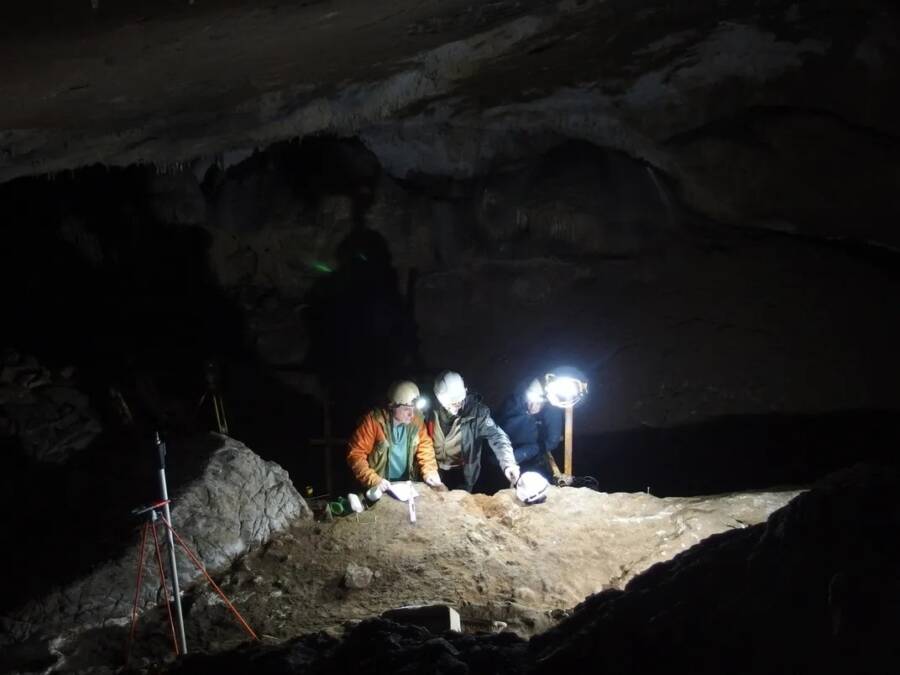Ancient Secrets Unearthed: Whale Bones Reveal Humanity’s Earliest Tool-Making Mystery
Radiocarbon dating suggests that these prehistoric whale bone tools are between 14,000 and 20,000 years old, which makes them “the oldest evidence of whale-bone working to our knowledge.”
How Stone Age People Interacted With Whales

Jean-Marc PétillonResearchers excavating prehistoric whale bone tools in France in 2022.
How did Stone Age people acquire whale bones for their tools? According to the study, “There is no evidence that European Pleistocene hunter-gatherers had the necessary technologies for hunting these species, such as seafaring or multi-barbed points that could have been used as harpoon heads.” Rather, they likely engaged in “passive acquisition methods.”
“Most of the species we identified (Sperm Whale, Blue Whale, Fin Whale, Right/Bowhead Whales) could not be hunted with the techniques of that time, and people were most likely taking advantage of natural strandings,” Pétillon explained to All That’s Interesting. “Scavenging the whale remains does not imply complex technologies or large groups, and it is well within the possibilities of Paleolithic hunter-gatherers as we knew them. This is also consistent with the fact that, in Western Europe, there is no evidence of seafaring before much later, in the Mesolithic.”
Of these whales, prehistoric people seemed to have a particular interest in sperm whale bones, but researchers aren’t sure if that’s because sperm whales were more abundant than other species or because hunter-gatherers sought them out. It’s possible that sperm whales were especially prized among Stone Age societies since they are “the only toothed species” of those identified and have a “long, straight, toothed jawbone that may have been considered as a particularly desirable block of raw material” for making tools.












